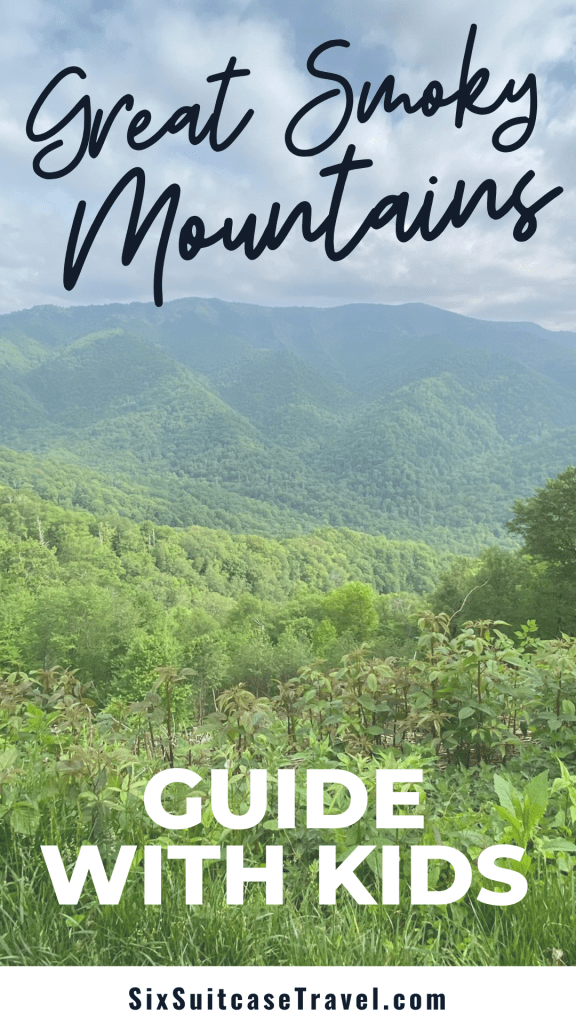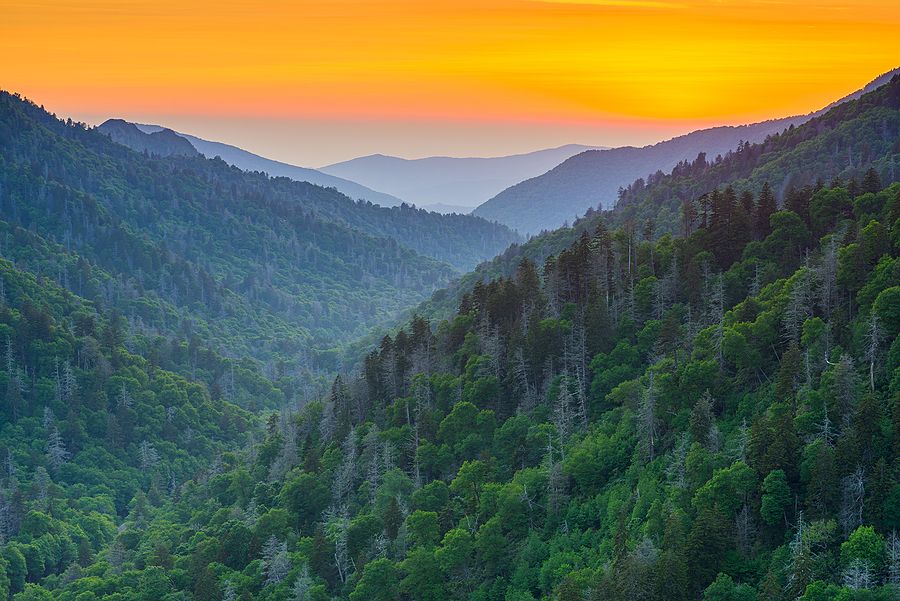
The Great Smoky Mountains National Park holds the distinction of being the most visited national park in the United States and for good reason. Not only is it home to an incredible array of plant and animal species, but it also boasts the title of the most biologically diverse national park in the country. Moreover, the Great Smokies span an unbroken chain of peaks that stretch for over 36 miles, offering visitors unparalleled views and countless opportunities for outdoor adventure. So whether your family loves the outdoors or is simply looking to escape the hustle and bustle of everyday life, the Great Smoky Mountains National Park is a must-visit destination that will not disappoint.
Nestled in the heart of the Appalachian Mountains, this stunning park has over 800 miles of hiking trails, scenic drives, waterfalls, and wildlife that will leave your family in awe. But planning a family-friendly trip to the park can often feel overwhelming.
That’s why we’ve put together the ultimate guide to help you plan a stress-free and unforgettable family vacation. From choosing the best time of year to visit to finding the perfect family-friendly activities, and even tips on what to know and lodging, we’ve got you covered. So pack your bags, grab your kids, and get ready for an adventure of a lifetime in the Great Smoky Mountains National Park.
“There are trees here that stood before our forefathers came to this continent; there are brooks that will run as clear as on the day the first pioneer cupped his hand and drank from them. In this park, we shall conserve the pine, the redwood, the dogwood, the azalea, the rhododendron, the trout, and the brush for the happiness of the American people.”
– Franklin Delano Roosevelt
- How to get to GSMNP and Park Entrances
- Closest Airports to Great Smoky Mountains National Park
- Best Time to Visit Great Smoky Mountains National Park: A Seasonal Guide
- Winter Wonderland: Exploring Great Smoky Mountains National Park in December, January, and February
- Spring into Adventure: Exploring Great Smoky Mountains National Park in March, April, and May
- Summer Fun: Exploring Great Smoky Mountains National Park in June, July, and August
- Fall Foliage: Exploring Great Smoky Mountains National Park in September, October, and November
- Entrance Fees/Costs for Great Smoky Mountains National Park: Everything You Need to Know
- 10 Top Things to Do in Great Smoky Mountains National Park with Kids
- 14 Top Viewpoints Driving Across the Park from Gatlinburg to Cherokee
- Hiking in Great Smoky Mountains National Park: A Guide to Easy Hikes and Waterfall Trails
- 5, 4, 3, 2, 1-Day Great Smoky Mountains National Park Itineraries
- 18 Tips for Visiting Great Smoky Mountains National Park with Kids
- Where to Stay at Great Smoky Mountains National Park
How to get to GSMNP and Park Entrances
Great Smoky Mountains National Park spans across Tennessee and North Carolina, with three main entry points: Gatlinburg, TN; Townsend, TN; and Cherokee, NC. The park attracts a large number of visitors every year, with the Gatlinburg entrance being the most popular.
If you are planning a visit to the park, it’s essential to know the various entry points to ensure a smooth and hassle-free experience. The most popular entrance at Gatlinburg offers easy access to park attractions such as the Sugarlands Visitor Center, and Cades Cove.
On the other hand, the Townsend entrance is a quieter alternative, offering a more secluded experience with easy access to peaceful trails like the Little River Trail and the Townsend Historical Trail.
The Cherokee entrance is located on the North Carolina side of the park, providing visitors with easy access to the Oconaluftee Visitor Center and Mingus Mill.
Three more entrances to less visited areas include Cosby, TN, Wears Valley, TN, and Catalooche, NC. See our guide to each of these park entrance towns. Discover the hidden gems and unique experiences each park entrance town has to offer.
For instance, Cosby, TN is a haven for those seeking solitude in nature, while Wears Valley, TN boasts stunning views and picturesque hiking trails. Meanwhile, Catalooche, NC offers a rich history and thriving wildlife in its serene setting. Note that while these entrances will get you into the park, Cosby and Catalooche do not connect with the main roads of the park – Newfound Gap Road and Little River Gorge Road.
Closest Airports to Great Smoky Mountains National Park
The closest major airport is McGee-Tyson Airport (TYS) in Alcoa, Tenn., just south of Knoxville. It’s about a 41-mile/1 hour 15-minute drive to the Gatlinburg park entrance. If you’re coming from the North Carolina side, the closest commercial airport is Asheville Regional Airport, which is approximately a 42-mile/1 hour drive to the Cherokee park entrance. If you’re flying into South Carolina, you can use the Greenville-Spartanburg International Airport, which is approximately a 100-mile/2-hour drive to the Cherokee park entrance. And finally, if you’re flying into Charlotte, North Carolina, the Charlotte Douglas International Airport (CLT) is approximately a 150-mile/2.5-hour drive to the Cherokee park entrance.
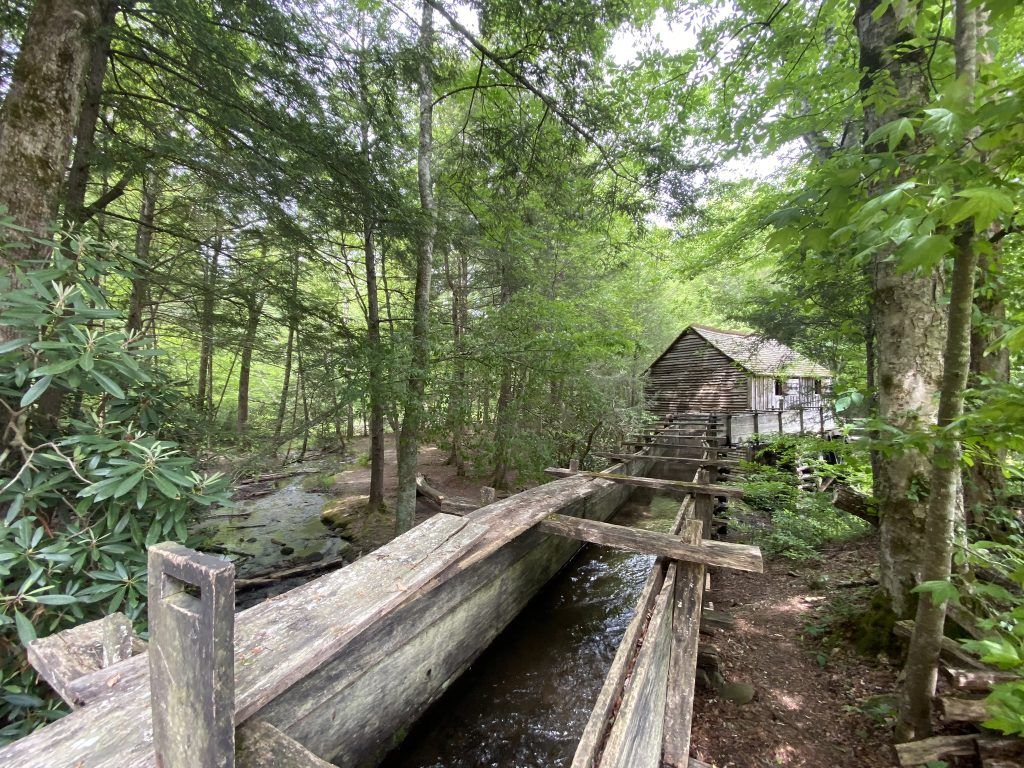
Best Time to Visit Great Smoky Mountains National Park: A Seasonal Guide
Great Smoky Mountains National Park is best visited during the summer months of June, July, and August, as well as in the fall. July is the busiest month of the summer season, while October weekends attract visitors seeking the picturesque autumn foliage. The park boasts a diverse terrain, spanning from 875 feet to over 6,000 feet, resulting in a temperature variation of up to 20 degrees between the base and the mountaintop. Therefore, it is advisable to pack layers and a rain jacket regardless of the season.
Winter Wonderland: Exploring Great Smoky Mountains National Park in December, January, and February
One of the great perks of exploring the Great Smoky Mountains in the wintertime is the chance to enjoy some peace and quiet due to fewer crowds. Additionally, the landscape is breathtakingly beautiful with fresh snow covering the mountaintops and lower elevation trails and trees sporting white powder. However, it’s important to note that some roads and areas might be shut down during this season, and the weather can be unpredictable, making it a bit of a drawback for visitors.
Spring into Adventure: Exploring Great Smoky Mountains National Park in March, April, and May
April and May are great months to visit before the summertime crowds hit the park. There are fewer people and lower accommodation rates during early spring. However, the weather in the Smoky Mountains during springtime can be tricky and can change from sunny to snowy in a matter of hours. The temperatures vary significantly across the park’s different elevations, ranging from the freezing point to as high as the 70s, depending on the time of day. Showers typically occur in the afternoons throughout April, but the weather starts to get warmer in May.
We visited the weekend before Memorial Day and found the crowds to be light. We were able to cover a lot of ground during our visit. In one day we were able to visit Roaring Fork Trail and Cades Cove – this is not normally accomplished during peak season. The weather was agreeable too with temperatures reaching the low to mid-70s with cool breezes.
Summer Fun: Exploring Great Smoky Mountains National Park in June, July, and August
During summer, temperatures range from the mid-60s in higher elevations to the high 80s in lower elevations. The warm weather brings the park’s busiest months. While all park amenities are open, you’ll be sharing the roads, trails, and views with the crowds.
Fall Foliage: Exploring Great Smoky Mountains National Park in September, October, and November
Mid-September marks the beginning of the fall foliage displays, making it an excellent time to visit since summer crowds have dispersed, and lodging rates are low. However, you find an increase in prices during cooler, autumn weekends in October as leaf-peepers visit the park to view the display of brilliant yellows, oranges, and reds.
Entrance Fees/Costs for Great Smoky Mountains National Park: Everything You Need to Know
Great Smoky Mountains National Park does not charge an entrance fee. However, beginning on March 1, 2023, a parking tag will be required for anyone wishing to park longer than 15 minutes. Tags cost $5 for a single-use tag, $15 for a 7-day tag, or $40 for an annual tag. Visitors can purchase tags either online or in person at a park kiosk. It is important to note that other national park passes, including America the Beautiful pass, will not be accepted in place of the parking fee.
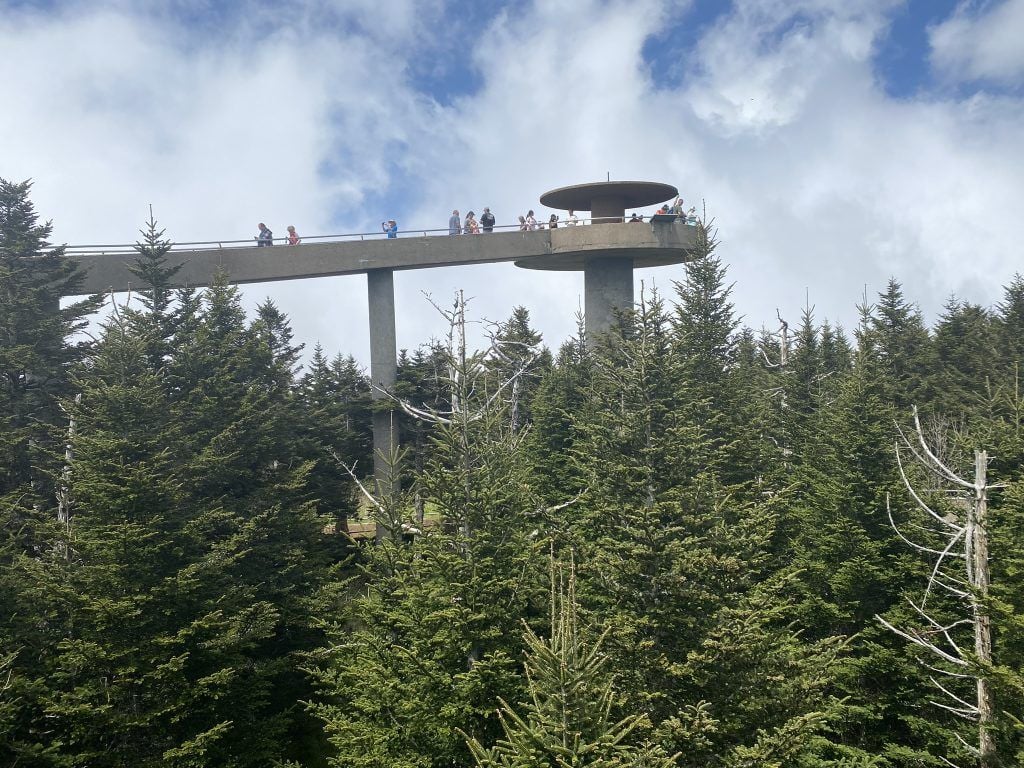
10 Top Things to Do in Great Smoky Mountains National Park with Kids
- Cades Cove: Take a scenic drive through this historic valley offering wildlife viewing, hiking, and historic landmarks. The 11-mile loop road allows visitors to see buildings such as churches, homes, and a gristmill. In summer months, the road is closed on Wednesdays to vehicle traffic to allow visitors to hike or bike the loop. The cove offers nine hikes including the popular Abrams Falls Trailhead. During our visit, we saw 5 bears in the cove. Bear sightings happen often and can cause traffic jams. Remember to pull over to let others pass
- Clingman’s Dome: Hike to the highest point in the park and take in panoramic views from the observation tower. While only a half-mile long, you’ll gain 332 feet in elevation making the hike a steep jaunt. Note that if it is a cloudy day, views will be greatly impacted, and the straight short hike up may not be worth the stop. During our visit, only about 75 degrees of the 360 view could be seen, the rest was blocked by clouds.
- Mountain Farm Museum and Mingus Mill: Step back in time and learn about traditional Appalachian farming and milling. This a great stop to stretch the legs and get some steps in.
- Newfound Gap Overlook: Stop by this popular overlook on the Tennessee-North Carolina border and snap some family photos. You’ll also find restrooms, the Appalachian Trail, and the Rockefeller Plaque. The plaque commemorates the $5 million gift by the Laura Spelman Rockefeller Memorial used to purchase land to help create the park.
- Roaring Fork Motor Nature Trail: Drive or hike through this 5.5-mile road and see picturesque streams, waterfalls, and historic buildings. While one way, there are many areas to pull over and get out to explore. Two popular hikes – Rainbow Falls and Grotto Falls – are in this area. We recommend scheduling this area as early as possible in your day.
- Waterfalls: Multiple falls include access by roadside or hiking allowing you to enjoy the natural beauty of waterfalls. While the park’s guide to waterfalls will direct you to the park’s most popular falls, we really liked Waterfalls of the Smokies. This resourceful book offers directions to 41 waterfalls including hiking distance, elevation guide, and description. (See our guide coming soon!)
- Take a Hike: Get some exercise and explore the park’s many trails, from easy strolls to challenging hikes you’ll easily find something to fit your family’s hiking style. (link to our article). The park offers over 850 miles of trail including 70 miles of the Appalachian Trail. Our favorite hike was Spruce Flats Falls located near the Great Smoky Mountains Institute at Tremont.
- Catalooche: Visit this historic valley and see preserved buildings from the late 19th and early 20th centuries, including two churches, a school, and several homes and outbuildings.
- Elkmont: Explore the remains of a former resort town and hike the Jakes Creek and Little River trails to see stone walls and chimneys that mark the former locations of cabins.
- Relax and slow down: Take a break from activities and enjoy a picnic in one of the park’s many picnic areas. We recommend Chimneys Picnic area. We loved the quiet, peaceful area that offered individual picnic pads with parking next to your table and grill. Some spots are along the West Prong Little Pigeon River.
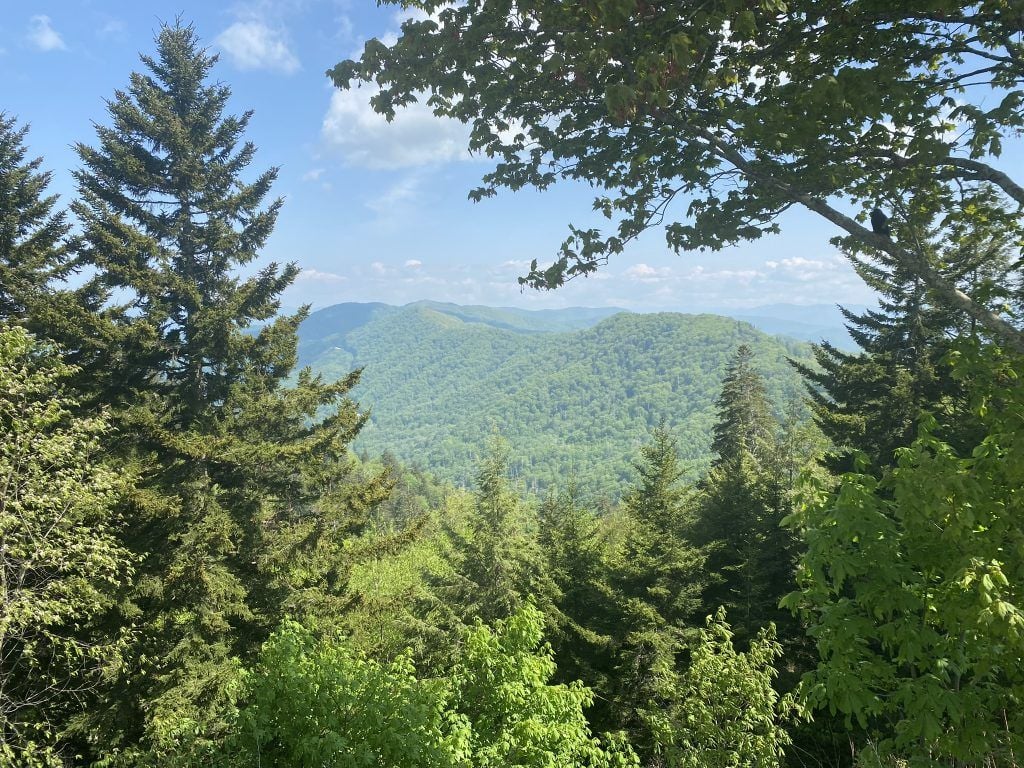
14 Top Viewpoints Driving Across the Park from Gatlinburg to Cherokee
The mileage posts driving through the park are hard to see or easily missed as you view the thick, beautiful greenery all around you. Unlike Yellowstone, signage doesn’t give much notice of upcoming turns and stops. I suggest resetting your trip meter when entering the park or recalculating each of the below stops once you know where you are along the road. Also, remember that the speed limit through the park is 45 mph with many areas slower. Driving faster will only make you miss your stops.
Purchase the Newfound Gap Road auto tour booklet for $1 from the visitor center to explore more pull-outs and overlooks.
- Sugarlands Visitor Center (mile 1.7): Explore the Sugarlands Visitor Center. While you’re there, take a leisurely 0.7-mile round-trip hike to Cataract Falls, this picturesque hike is perfect for families.
- Campbell Overlook (mile 3.9): View Mount LeConte sloping down to Gatlinburg, along with Balsam Point and Bullhead.
- Chimneys Picnic Area (mile 6.2): Take a break, have a picnic, and enjoy the beautiful views. Convenient parking next to your picnic table and restroom facilities.
- Chimney Tops Trail (mile 8.6): For those looking for a moderate to strenuous hike, this popular trail rewards a 1.7-mile one-way and 1400-foot elevation gain with rewarding views of the park.
- Alum Cave Trail (mile 10.4): A strenuous yet well-liked trek, the Alum Cave Bluffs sits 2.5 miles away from the starting point. Keep going for an additional 2.5 miles until you reach the trail’s finish, right under Mt. Le Conte’s peak. With an elevation shift of 1,200 feet, you’ll definitely want to set aside a whole day for this adventure.
- Morton Overlook (mile 14): Enjoy the scenic views of the valley and mountains. since the overlook faces west, it is a great spot for taking sunset photos.
- Newfound Gap (mile 14.7): Halfway through the drive, this rest stop offers restrooms and the chance to stand on the state line between Tennessee and North Carolina.
- Clingmans Dome Road: Take a scenic seven-mile drive to the trailhead. From the parking lot, a steep half-mile paved trail leads to the observation tower, the highest point in the park. Experience breathtaking 360-degree vistas from the tower, and on a clear day, you can even spot a hundred miles away and seven different states.
- Oconaluftee Valley Overlook (mile 15.4): Take in the beautiful views of the valley from this overlook. Since the overlook faces east, it is a great spot for taking sunrise pics.
- Webb Overlook (mile 17.7): Another beautiful overlook with scenic views that can be viewed from your car. You’ll be able to see Clingman’s Dome rising from the surrounding landscape.
- Collins Creek Picnic Area (mile 25.4): Take a break and have a picnic near the creek. The area has 182 sites and a pavilion along Collins Creek.
- Smokemont Campground (mile 27.2): Take a drive through the campground and enjoy the scenery. Hike the Smokemont Loop Trail to visit several homesites and the Bradley Cemetery with graves dating from the 1800s to 1925.
- Mingus Mill (mile 29.9): Learn about the park’s history and see a working gristmill. The mill was built in 1886 and restored in 1968. Fresh cornmeal and whole wheat flour are available for purchase.
- Oconaluftee Visitor Center (mile 30.3): End your drive at the visitor center and learn about the park’s history, wildlife, and more.
Hiking in Great Smoky Mountains National Park: A Guide to Easy Hikes and Waterfall Trails
Depending on your family’s hiking preferences and abilities, the 800 miles of trails will offer something perfect for your family. It’s important to consider the elevation gains when choosing a hike. Here are some easy options that are all under 5 miles round trip:
- Walker Sisters Cabin, Grotto Falls, Laurel Falls Trail, Mouse Creek Falls, Clingmans Dome Trail, The Gatlinburg Trail, Little River Trail, Oconaluftee River Trail, Elkmont Nature Trail, Indian Creek Falls
Check out our detailed article on easy hikes in GSMNP and a complete guide to waterfall trails. (Coming soon!)
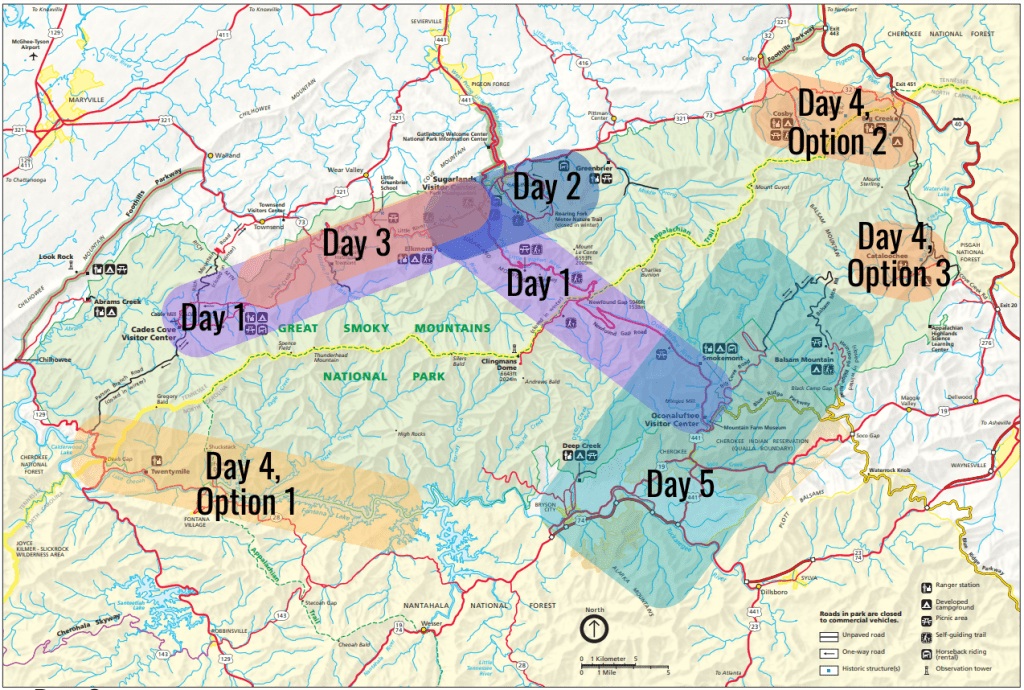
5, 4, 3, 2, 1-Day Great Smoky Mountains National Park Itineraries
Following the below schedules, you’ll cover our top places to visit and the must-see viewpoints we list above. Itineraries are from Gatlinburg, the most popular place to stay near the park.
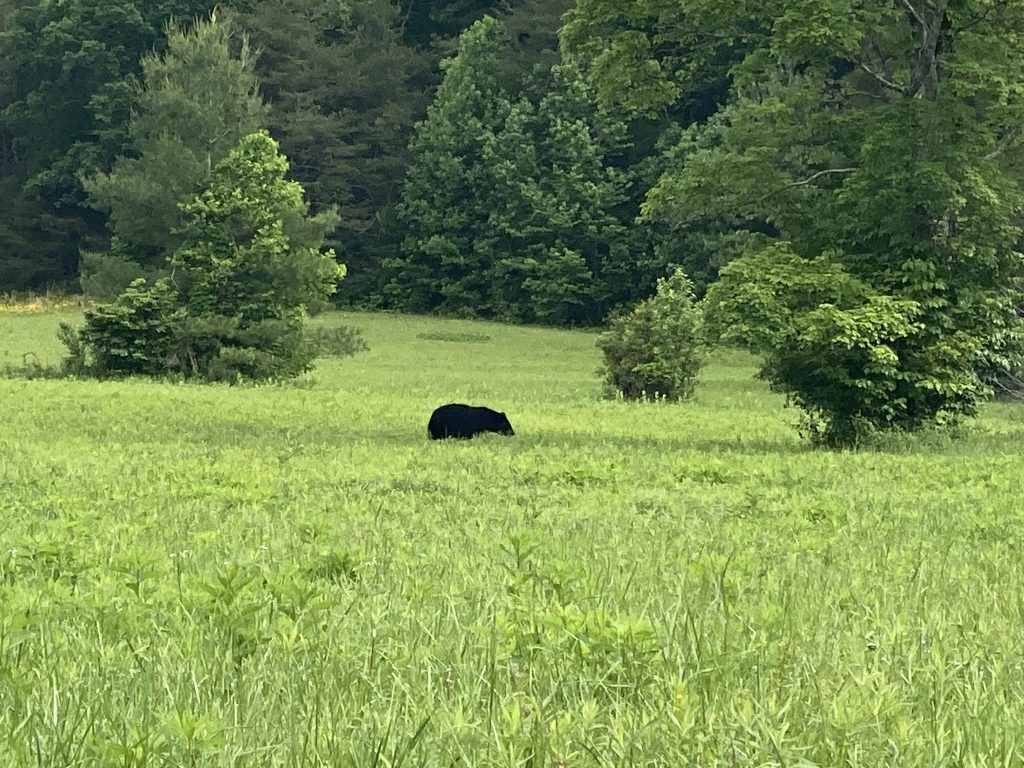
One Day Itinerary: Cades Cove and Newfound Gap Road
If you’re traveling through the area and only have one day to spend at the park, we recommend seeing the following.
- Arrive early and drive to Cades Cove. Pick up a Cades Cove Tour booklet to learn about the history of the area and provide more information about the 18 points along the loop.
- Stop at Sugarland Visitor Center to pick up the park’s auto tour booklets.
- Drive through the park on Newfound Gap Road to Cherokee stopping at our suggested 14 points above.
- Explore the Oconaluftee Visitor Center in Cherokee then drive back to Gatlinburg or continue on your way out of the park.
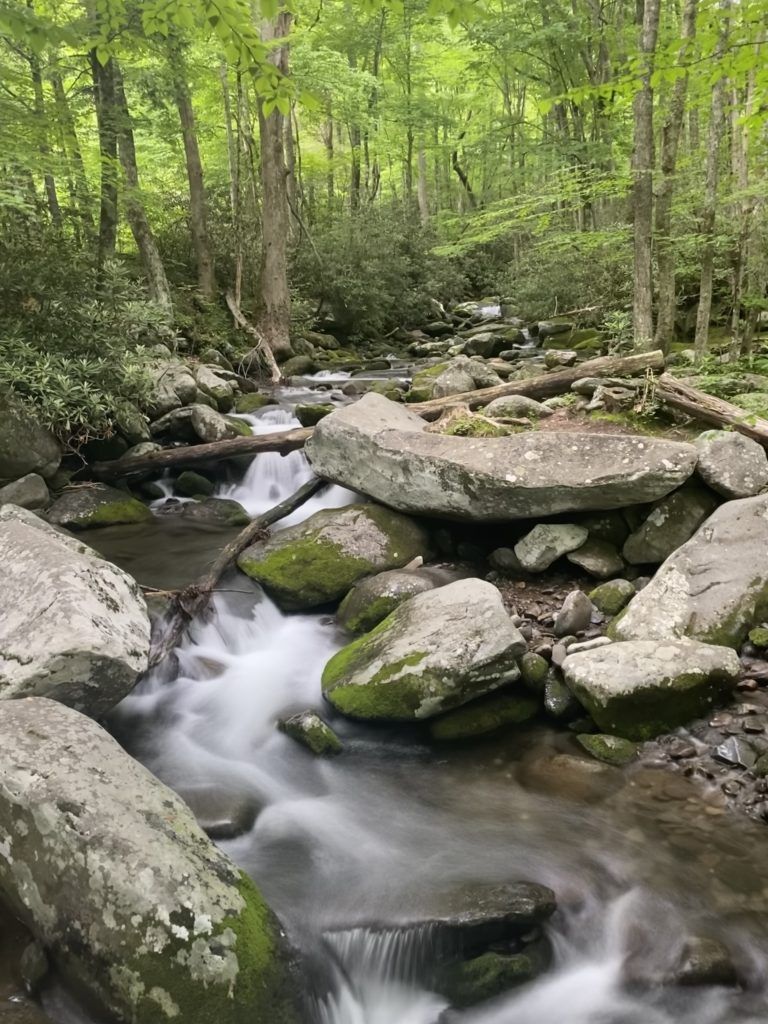
Two-Day Itinerary: Roaring Fork Motor Trail and Sugarland Visitor Center
Complete day one above and on your second day, head over early to Roaring Fork Motor Trail. As you meander along the winding, narrow road, the green tree canopy and the soothing sounds of Roaring Fork Creek make for a relaxing journey. The trail offers glimpses of history through well-preserved log cabins and homesteads and several hiking opportunities including Rainbow Falls and Grotto Falls. Don’t miss Place of a Thousand Drips on your left-hand side right next to the road. Use the Roaring Fork auto tour to learn more about the area as informational placards are limited.
Drive through Gatlinburg back into the park to the Sugarland Visitor Center. Once you’ve explored the visitor center, hike to Cataract Falls (0.7 miles round trip), the Gatlinburg Trail (1.9 miles one way), or Fighting Creek Nature Trail (1.2-mile loop)
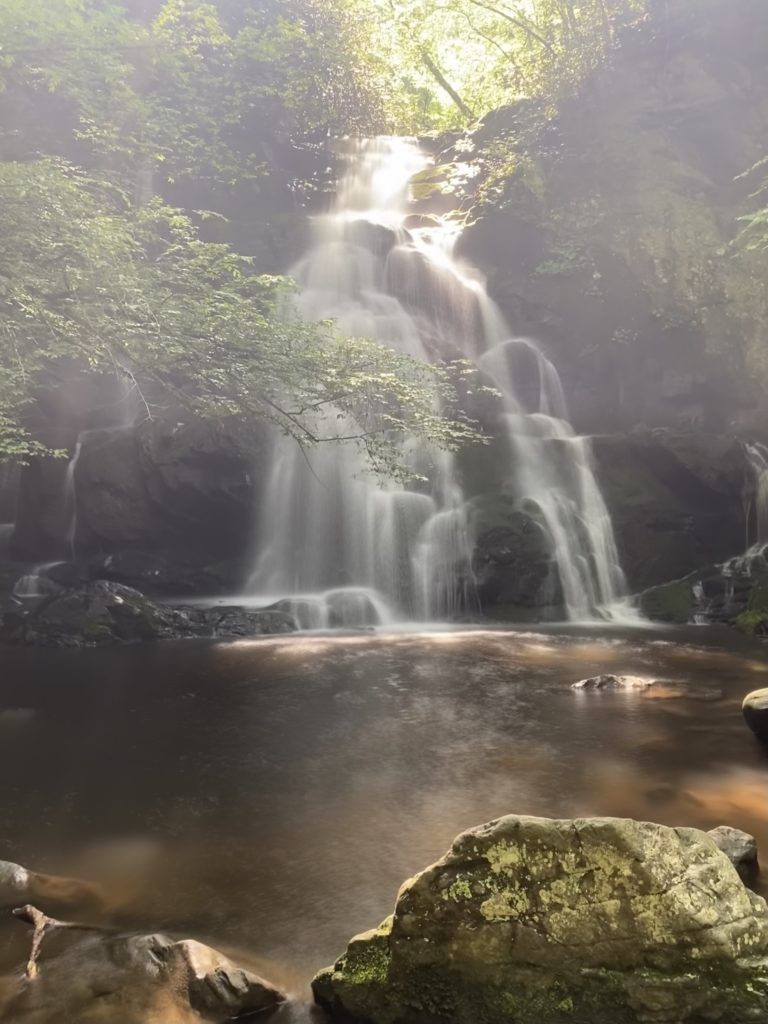
Three-Day Itinerary: Waterfalls, Waterfalls, Waterfalls!
On a third day, schedule a waterfall hiking day. With over 100 waterfalls in the park, you’ll find many to fill your day. Little River Road is a great area to see many of them in one day. See our article on 10 falls to view in this area. (Coming soon!)
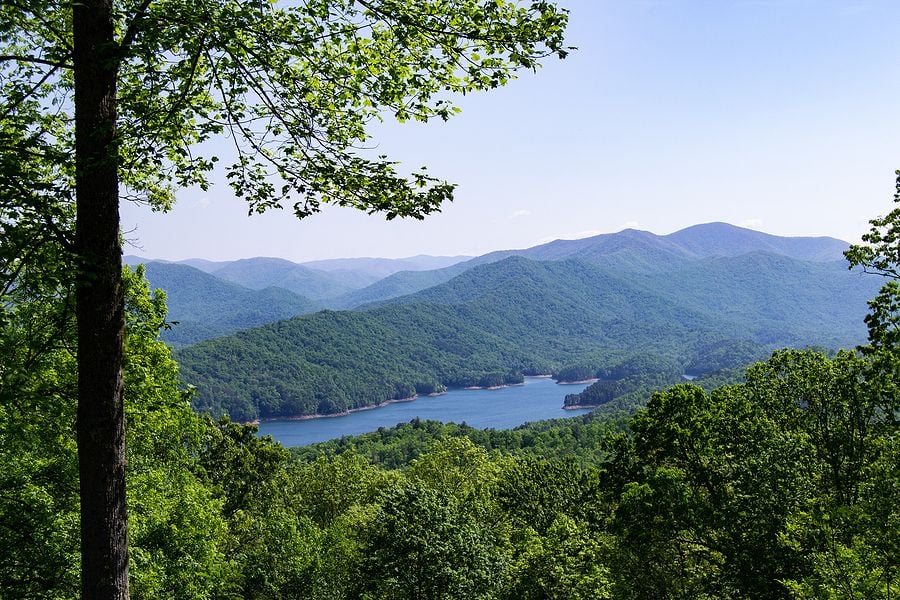
Four-Day Itinerary: Explore Quieter Areas
Explore one of the more secluded areas of the park such as Fontana Lake, Cosby, Big Creek, or Cataloochee.
- Explore Lake Fontana: From Gatlinburg, drive up to Pigeon Forge and take Highway 321 to the Foothills Parkway West. Continue on Highway 129 to Fontana Village. This route includes Tail of the Dragon, a scenic 11-mile stretch with 318 curves, a 30 mph speed limit, and popular with motorcyclists. If you have anyone prone to car sickness – be prepared. Fontana Lake is 31 miles long, covers 10,230 acres, and has 238 miles of shoreline. Tour the dam, visit the marina, or take a guided cruise of the lake. Spend a day swimming, kayaking, or fishing and have a picnic. Want to spend more time? Rent a lakehouse!
- Check out Cosby and Big Creek: Cosby is about 20 miles east of Gatlinburg. If you want to avoid the crowds, this area of the park fits the bill. Enjoy time at the Cosby Picnic Area, explore one of the hiking trails, or camp. Continue on to Big Creek, located a short drive off of I-40. Big Creek offers camping, restrooms, a picnic area, a rangers station, and hiking. Popular hiking destinations include Midnight Hole and Mouse Creek Falls.
- Discover Catloochee: Access to this area includes driving two miles on a well-maintained narrow gravel road. Amongst the 6000 mountain peaks, you’ll find several historic buildings from the late 19th and early 20th centuries. Cataloochee once was home to 1,200 people in 1910. Learn about the area by exploring the school, homes, and two churches. Pick up a self-guiding auto tour booklet located in the area for $1. Additional activities include fishing, camping, and hiking.
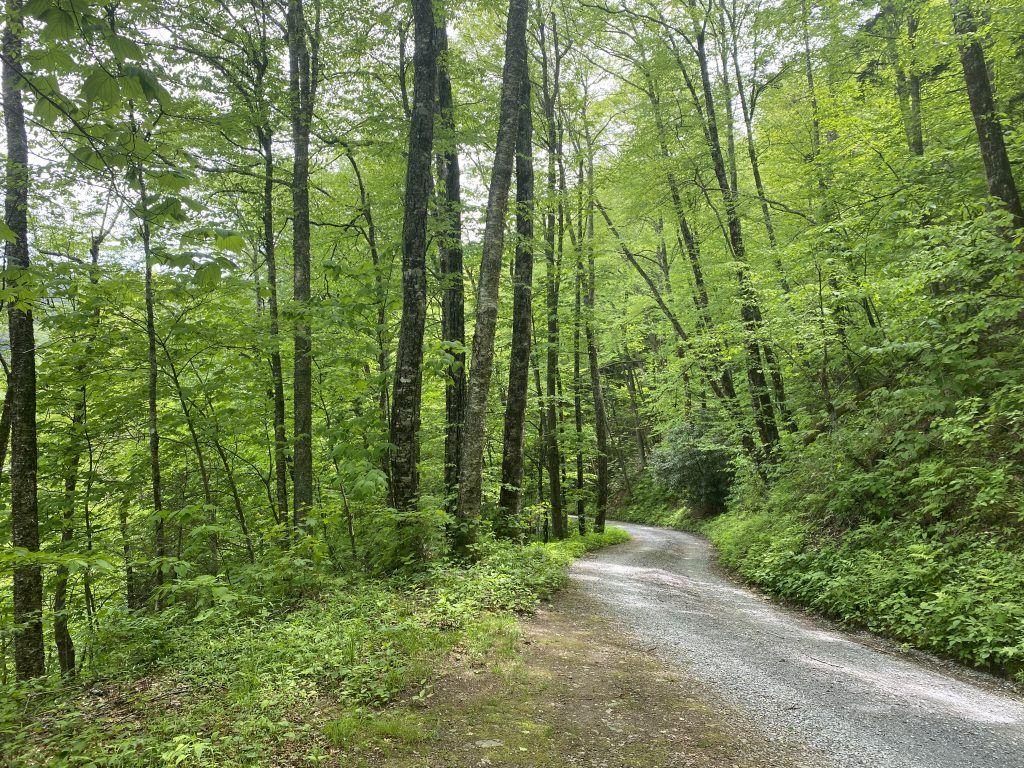
Five-Day Itinerary: Oconaluftee Area
Further explore the Oconaluftee Visitor Center/Cherokee area. You’ll find the following options will help you fill half or a whole day and still leave time to explore Cherokee, NC.
- Drive the scenic 49-mile Balsam Mountain Road Loop. Consisting of Blue Ridge Parkway to Heintooga Ridge Road and Balsam Mountain Road to Big Cove Road. Open seasonally, this mountainous road has an 18-mile one-way gravel road. We drove the loop and found the 15 mph very necessary on the many-turn narrow road. Halfway through, I was emotionally done driving the gravel road but with no choice and too proud to switch with hubs, powered through. Shortly after, we had a slow flat that we had to have plugged in Cherokee. Shout out to the Firestone that got us back on the road after the $30 repair. I still recommend completing the drive up Heintooga Road where the gravel road begins and driving back the same way.
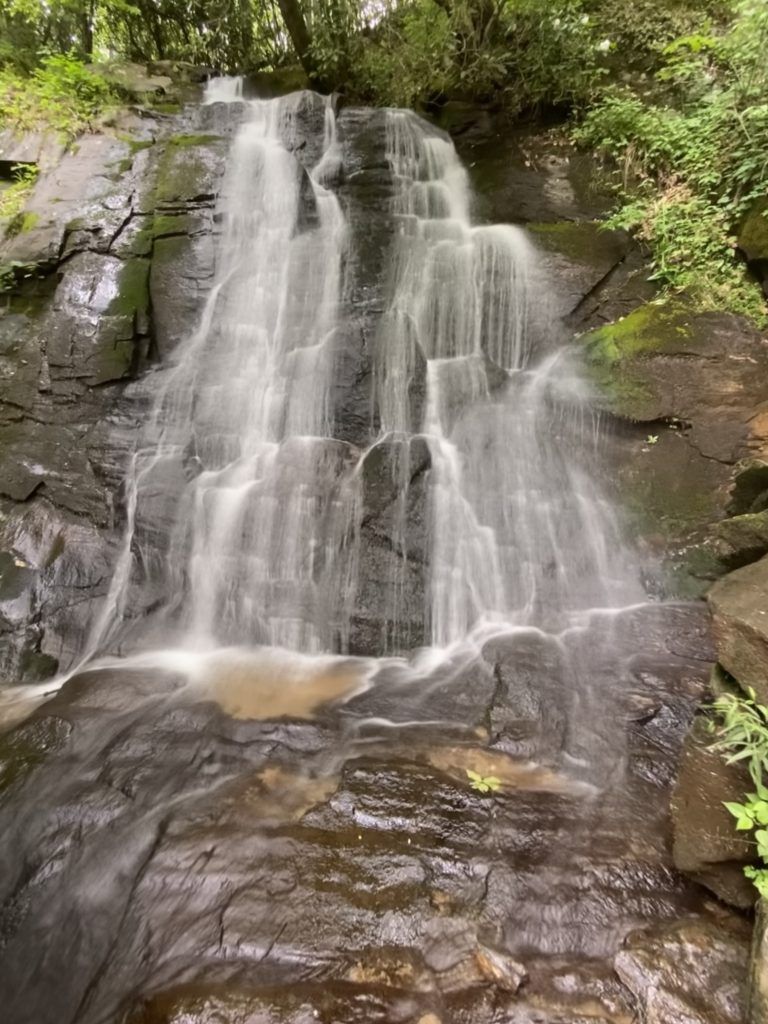
- Drive to Bryson City to hike the Deep Creek Waterfalls Loop to view Juney Whank Falls, Tom Branch Falls, and Indian Creek Falls. From downtown Bryson City, take E Deep Creek Road to the park’s trailhead. On the road, you’ll see a lot of places to rent vinyl tubes and lifejackets to tube Deep Creek. The walkway down to Tom Branch Falls seems like a good place to enter the creek. If you are short on time, we recommend skipping Indian Creek Falls as in our opinion, Juneywhank and Tom Branch were more impressive.
- Hike the Bradley Fork/Smokemont Loop Trail. Located at mile marker 27.2 or 3.1 miles north of Oconaluftee on Newfound Gap Road at Smokemont Campground. You can hike Bradley Fork Trail 1.7 miles one-way to the junction with Smokemont Loop and back or continue 3.9 miles on Smokemont Loop back to the campground. As always, you can hike as far as you want and head back.
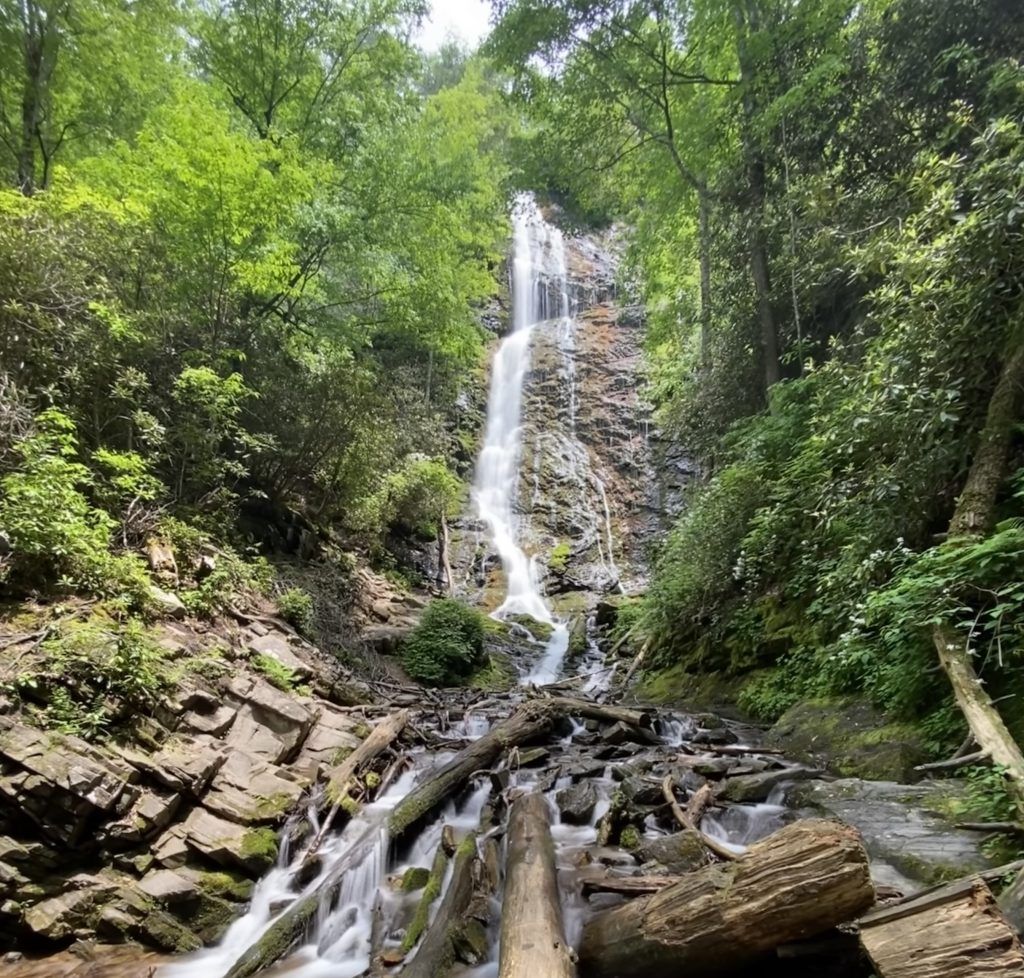
- Located off Big Cove Road and across Raven Fork in the Cherokee Indian Reservation, Mingo Falls is another must-visit. Once you ascend the 158 stairs, it is a short walk to view the 120-foot falls.
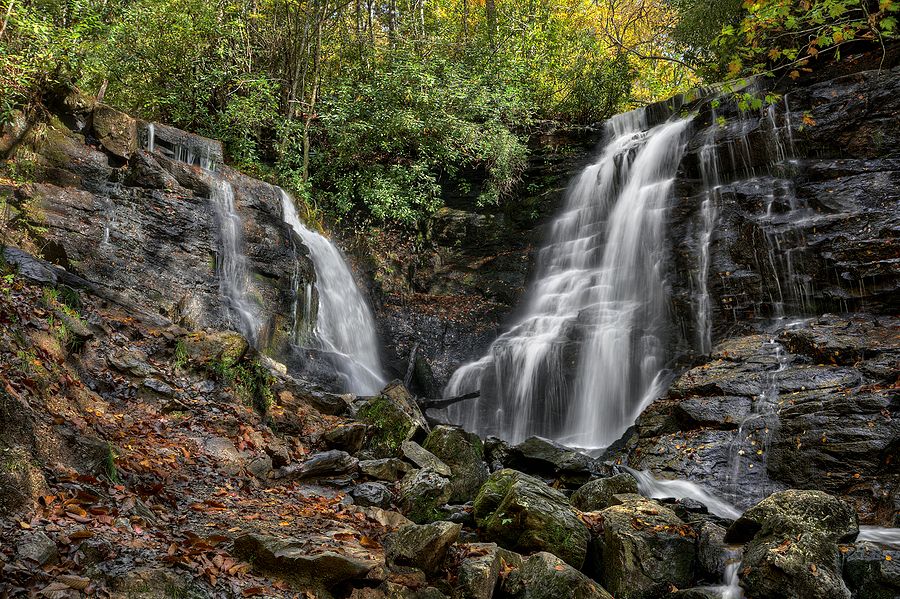
- Although not located in the park but in the Cherokee Nation, we highly recommend driving east on Hwy 19 to Soco Falls. The unassuming pullout has room for about five vehicles. Take the steps down to the viewing platform to view the double 40 and 50-foot falls.
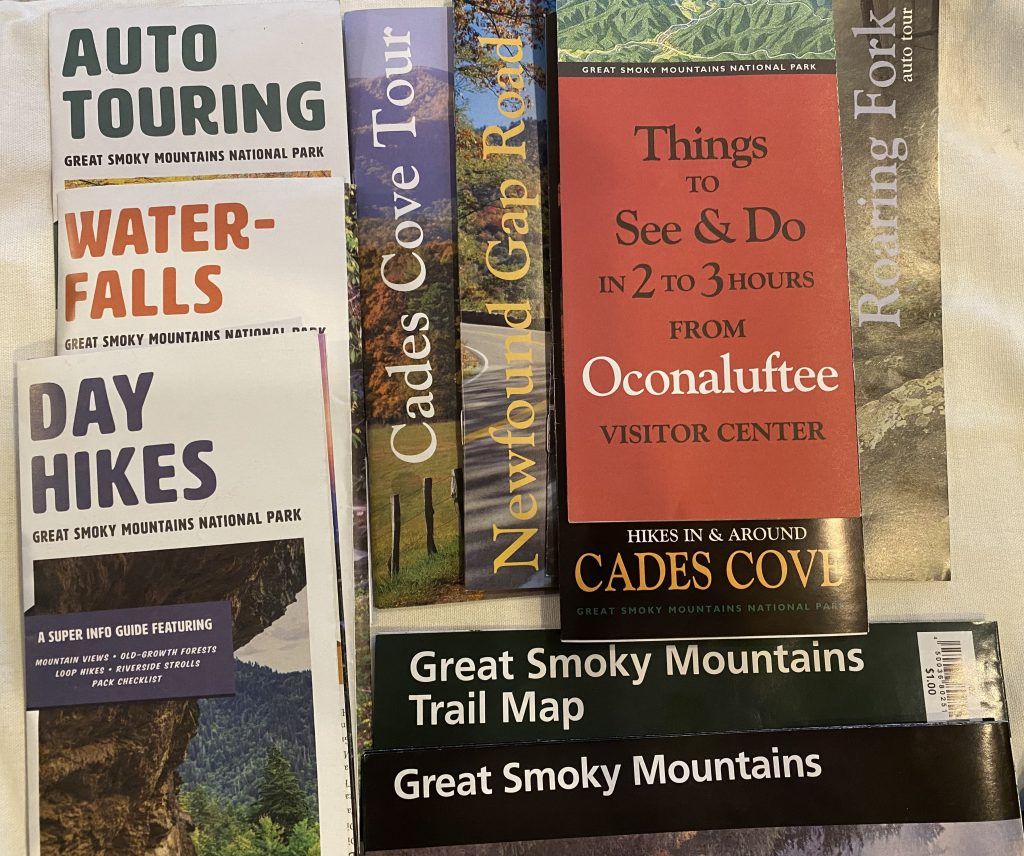
18 Tips for Visiting Great Smoky Mountains National Park with Kids
- Synchronous fireflies are one of at least 19 species of fireflies found in the Great Smoky Mountains National Park, and they synchronize their flashing light patterns as a way for females to recognize males of their own kind. The mating season lasts for approximately 2-3 weeks each year and begins at various times from the third week of May to the third week in June. Annual viewing opportunities are held near Elkmont Campground. Vehicle passes are attained through a lottery system on recreation.gov.
- Pick up a Junior Ranger program (charge) in the visitor center. Have your kids complete the booklet to earn their Junior Ranger badge.
- Enjoy the diversity of the park. Over 19,000 species have been documented in the park, including more than 100 species of native trees, over 1,500 flowering plant species, more than 200 species of birds, and over 9,000 different species of insects.
- Park shuttles – 6 authorized shuttle providers. Some are like a park Uber, able to pick drop you off/pick you up from a trailhead, others are tours
- The park doesn’t have a lot of informational placards. Pay $1 for each of the park’s tour booklets. We picked up 7 guides and found each one informative and helpful.
- You can pay for parking through recreation.gov before you visit.
- Early, early, early. Like most national parks, the best time to visit is early in the morning.
- Pack ponchos or rain gear. Have it handy on sunny days, you never know when you might need it.
- Do not count on your cell phone for a map, you are not always going to have service. Go old school and purchase a hiking map.
- The park has 30 species of salamanders and has the title “Salamander Capital of the World”. See who can spot the most!
- Pets aren’t allowed on most trails.
- Bring cash to purchase trail maps and tour guides.
- Have a car phone charger, an additional battery pack, or place your phone on airplane mode when hiking to save your battery life.
- Purchase and download the GuideAlong app for an audio tour to learn about 180 points through the park.
- US Route 441/Newfound Gap Road is a thorough road. Many people go through the park without stopping, be aware if you view wildlife to pull over and not stop on the road
- Pack bug spray to protect against mosquitoes and ticks. Know what ticks look like and how to remove them.
- Pack a lunch and snacks, no dining is available in the park.
- Take time to explore the Quiet Walkways through the park. As you drive through the park, you’ll see signs labeled “Quiet Walkway”. In the park, there are about 14 of these short trails (usually 0.25-0.5 miles long). Add one or two of these lesser-traveled hikes to your itinerary for an easy jaunt with the kids.
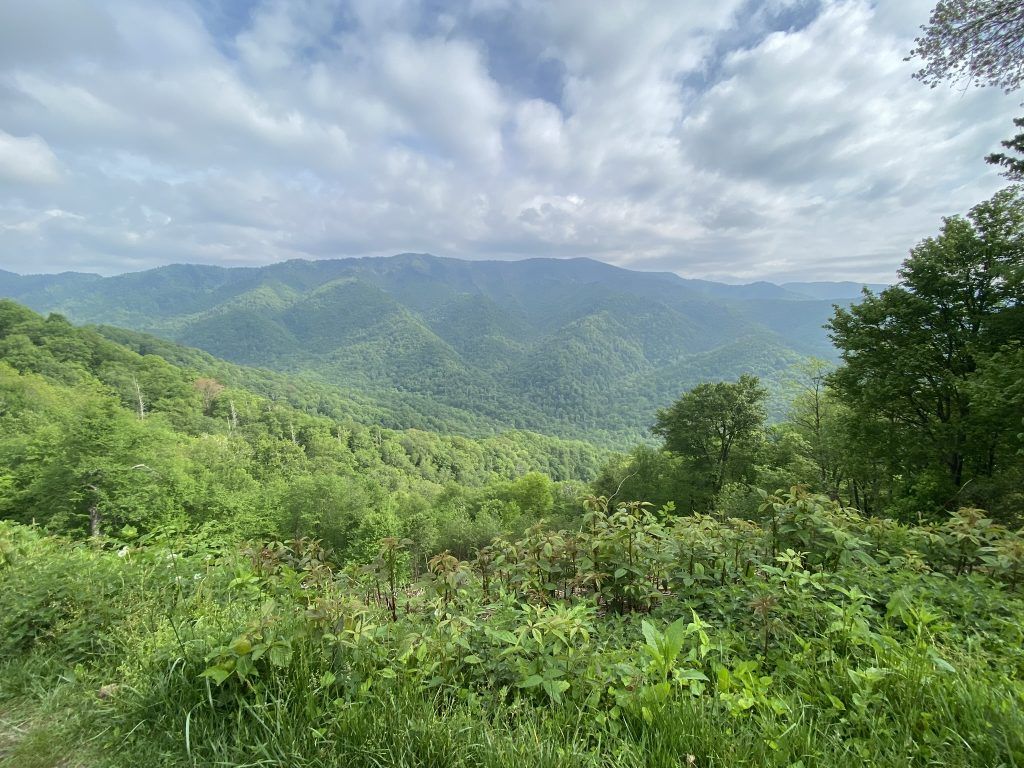
Where to Stay at Great Smoky Mountains National Park
Hotels for Big Families near GSMNP
Take a look at our hotel listings conveniently located near the popular entrances of the Great Smoky Mountains National Park in Gatlinburg and Cherokee.
Camping in Great Smoky Mountain
The Great Smoky Mountains National Park offers four types of year-round camping options: Backcountry, Frontcountry, Group Campgrounds, and Horse Camps. There are ten Frontcountry locations available, all equipped with restrooms that have cold running water and flush toilets, but no showers are available.
RV Campsites in GSM
If you’re planning to camp in an RV, you’ll find several campgrounds that can accommodate RVs. These campgrounds include Cades Cove, Cataloochee, Cosby, Deep Creek, Elkmont, and Smokemont. However, it’s important to note that each campground may have different size restrictions, so be sure to check the guidelines for each location before making your reservation.
Vacation and Cabin Rentals
If you’re looking for vacation rentals and cabins near the Great Smoky Mountains National Park, the west side of the park near Gatlinburg is your best bet. From cozy cabins nestled in the woods to spacious vacation homes with breathtaking mountain views, there’s something for every taste and budget.
